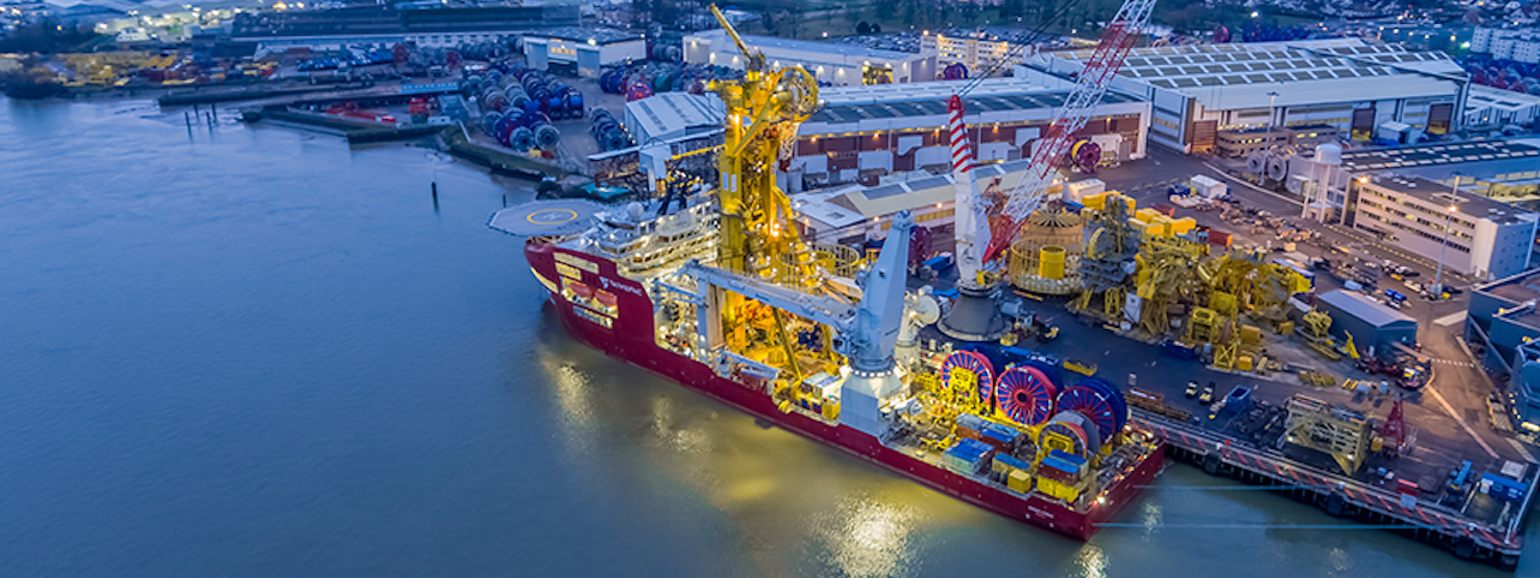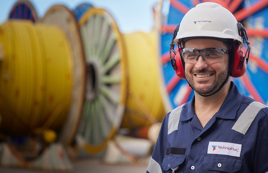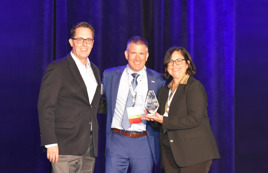News - Press Release

Kevin Thomson, Vice President TechnipFMC - Marine Operations Services, sits down and explains how TechnipFMC is driving change in the industry.
-

How is our Fleet business driving change?
-
Kevin Thomson (KT): In many ways, whether that’s in terms of our environmental efforts, greater digitalization, or simplification and standardization.
For example, eliminating single-use plastics from your home onshore is challenging. Offshore, when you add in the marine industry’s historical reliance on plastics, it’s an even tougher task.
Recently, however, our fleet won an award from the International Association of Marine Contractors for our grassroots campaign to rid our vessels of single-use plastics. It’s fair to say other companies did not believe it was possible.
From plastic shoe covers to drinking water, there were many areas to consider. But this initiative was successful because it came from our employees, not anywhere else. They saw a problem and had the drive to deliver change.
-

So, TechnipFMC is taking a lead in the industry. What makes the company stand out?
-
KT: We stand out because driving change is an ethos that reaches into the working lives of all 37,000 of my colleagues. Together, we simply want to find new, better, more sustainable ways of doing what we do for the oil and gas industry – and doing all that safely. It is in the interest of all of us.
There has to be leadership buy-in for change to happen, but it must be driven from every layer of an organization, especially in a business that spans the globe – and spans cultures – in the way TechnipFMC does. Management can provide an environment and framework which enables changes, but those changes have to be led and embraced at every level.
The fleet is a key enabler to a lot of the change the company is enacting. Vessel day rates, schedules, 'up-time' and reliability are important to not only the cost of a project, but in reducing time to first oil. The change the fleet drives is wholly led by our company’s mission and vision. Besides our sustainability success with plastics, there are other areas where the fleet is in the forefront of driving change, not just in our company, but industry-wide. One I would highlight is digitalization.
We have a strong program in place to use digital tools to make our operations more efficient and safer than ever before. For example, we've been using condition-based monitoring solutions on our critical marine equipment to ensure our vessels are reliable and maintain peak performance. We continue to explore and adopt other technologies which may enable more efficient and safer operations, which include remote operations.
-

To what extent do evolving technology and sustainability practices drive change in the fleet? And how quickly are we adapting to new circumstances?
-
KT: The fleet always aims to take advantage of new technology and sustainability practices, wherever possible. We’ve seen these two areas merge recently to drive change on the North Sea Giant vessel – a long-term charter from North Sea Shipping (NSS) to TechnipFMC – which had batteries installed last year to effectively operate on hybrid power in certain situations. We’re now looking to identify other vessels where this technology would be appropriate – innovation, experimentation and evaluation are driving change.
-

Obviously, the fleet is a finite resource – does managing that resource drive change elsewhere and how important is collaboration and joined-up thinking to the process?
-
KT: Marine operations in TechnipFMC is an internal service provider. For us, the company goal of drive for our clients’ success has an added level: We don't just strive to help the end clients succeed, we have to drive for the success of our internal “clients” – the Global Business Units that make up the company.
This means collaboration is central to everything we do. Working with teams around the globe to balance requirements and schedules can be challenging but if we approach this with our company’s values in mind, we reach a good resolution.
Our work to eliminate single-use plastics is one example of the teamwork, determination and effort my colleagues put into driving change. It is by no means the exception.
-

Does change have to come from the top or can it filter up?
-
KT: It has to work both ways. Last year, we launched a new business improvement program, called “Propel”, in which colleagues at all levels can submit ideas to improve our operations. We have had an overwhelming response and have already seen real benefits from this.
One suggestion from our diving fleet helped us remove the need for end of saturation reports for divers. A single idea saved a total of seven days of dive supervisors’ time across all our dive support vessels (DSV). This is just one example of frontline experts finding new ways to smooth processes and improve our services.
Our employees are some of the best in the business. It may sound like a cliché, but the best ideas really do come from them – the role of the 'top' should be to enable them to create the change.
More news
-

News | May 06, 2025
TechnipFMC Advances Hybrid Flexible Pipe Technology Innovation in Collaboration with Petrobras
-

News | March 18, 2024
Inside HISEP® – How TechnipFMC is taking dense gas separation and storage fully subsea
-

News | October 19, 2023
TechnipFMC wins NOIA ESG Excellence award